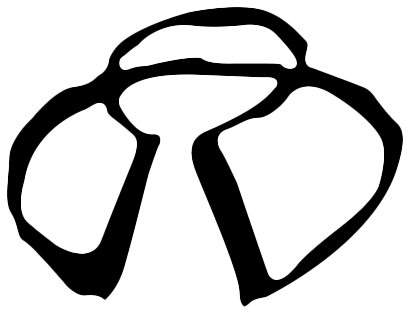ABOUT ELIZABETH MURRAY
Elizabeth Murray (b. 1940, Chicago, IL—d. 2007, Granville, NY) was an artist at the forefront of American painting for five decades and is considered one of the most important postmodern abstract artists of her time. Her drive and determination produced a singularly innovative body of work characterized by a Cubist-informed Minimalism and streetwise Surrealism. Throughout her career, she reveled in the physicality of paint and approached her work through the constructive vocabulary of sculpture, warping, twisting, splintering, and knotting her canvases. In her innovative and deeply imaginative body of work, Murray not only reclaimed the medium of paint as her own but shared personal evocations of birth and death, laughter and confusion, fullness and loss.
From an early age, Murray wanted to be an artist—a cartoonist actually. With the support of her high-school art teacher, Elizabeth Stein, Murray enrolled at the School of the Art Institute of Chicago with the aim of becoming a commercial artist. However, she would spend more time learning from the works on view in the museum than in the classroom, gravitating toward the paintings of El Greco, Francisco de Zurbarán, Georges Seurat, Henri Matisse, and Pablo Picasso. Above all, it was the work of Paul Cézanne and Willem de Kooning that fueled her commitment to becoming a painter. After graduating in 1962, she went on to continue her studies at Mills College in Oakland, California. In 1967, she moved to New York City, where she would live and work until her death in 2007.
Murray’s works from the 1960s reflect an irreverent embrace of the materiality of paint. Here, the artist experimented with elements of sculpture while maintaining allusions to the figure informed by her long-standing affinity for cartooning. Murray’s childhood love of Walt Disney and comics would underpin many aspects of her art throughout her career. During the 1970s, Murray dismantled—then rebuilt—many of the compositional strategies and theories associated with Minimalism. Using curved lines and complex shapes loosely informed by mathematical ideas, she introduced geometries that transform scale, shape, and form to her thickly painted and layered compositions. In the following decade, Murray introduced three-dimensionality to her canvases, bringing about a complete break from traditional, flat, rectilinear compositions. Muddied, moody, and gestural, the paintings of the 1980s blazed a course of international recognition and notoriety. In these works, interiors, tables, coffee cups, shoes, and other signature themes emerge from skeins of spray paint and graffiti-like markings. During the 1990s, Murray’s works became flatter while retaining a high degree of compositional elaboration and chromatic exuberance. In the final years of her career, the artist offered new visions of her characteristic motifs in vibrantly painted, multipaneled paintings.
In 2005, Murray earned the distinction of becoming only the fifth woman to receive a career retrospective at The Museum of Modern Art, New York, following Louise Bourgeois, Lee Krasner, Helen Frankenthaler, and Jackie Winsor. Elizabeth Murray included more than seventy-five paintings and works on paper spanning the whole of Murray’s career. The exhibition traveled the following year to Institut Valencià d’Art Modern.
-composed by Jason Andrew for the Estate of Elizabeth Murray




